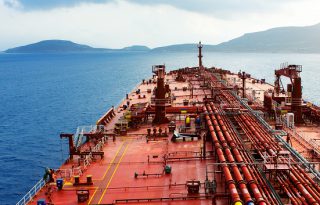
Oil tankers experienced a tough start to 2017 as freight rates for all crude oil and oil product tankers continued their decline following the brief lift at year-end, according to international shipping association BIMCO.
Although average earnings stood at USD 18,853 per day by April 7, 2017, down from USD 63,284 per day reported on December 16, 2016, the very large crude carriers (VLCCs) may not yet have bottomed out.
Looking at the supply side, the 2016 low demolition trend seems to be changing. Namely, last year 2.6 million dwt was sold for demolition, while a total of 0.9 million had left the fleet for recycling at shipbreaking facilities by the end of March 2017.
Although slightly busier than 2016, this has been a slow start to what BIMCO expects will be “a busy year for tanker demolition.”
As cargo volumes are not expected to grow that much in 2017, the increase in demand must come from longer sailing distances, and changes to the volumes from one country to the next, BIMCO informs.
China rules the crude oil tanker market, as in many other shipping markets, having been solely responsible for the incremental crude oil tonne mile demand growth since 2010. The country is set to do it again in 2017.
However, BIMCO said that “the US could spoil the party.” As supply cuts from OPEC dropped from their highest supply level ever at 33.9 mb/d in October 2016, the US witnessed an increase of supply. This lifted US crude oil stocks to their highest level ever, while global stocks sidestepped.
“A continuance of that could prove difficult to uphold. 2016 was an abrupt break of trend that has seen US seaborne crude oil imports drop consistently since their peak in 2005,” BIMCO said.
The shipping association added that 2017 “is proving to be a year of change for oil tankers, as was indicated during 2016 with freight rates coming down. After two years of solid demand growth, 2017 is a year of tepid demand growth around 0–2%. As fleet expansion is also slowing down, though still at a higher growth rate than demand, the shipowners have their work cut out.”
Copyright Ships & Ports Ltd. Permission to use quotations from this article is granted subject to appropriate credit given to www.shipsandports.com.ng as the source.